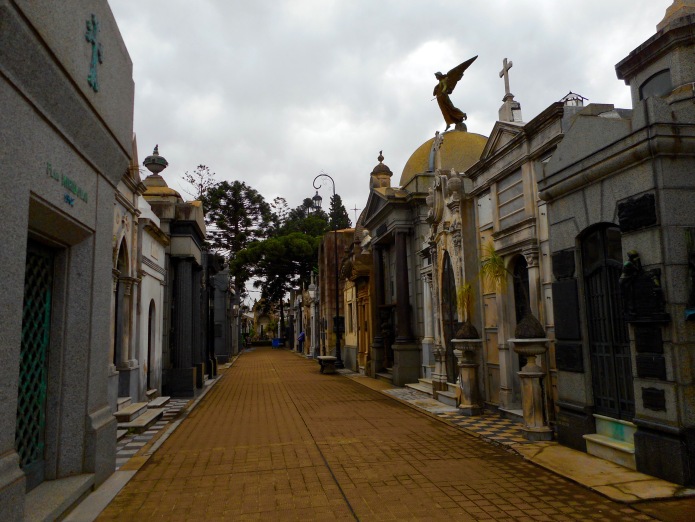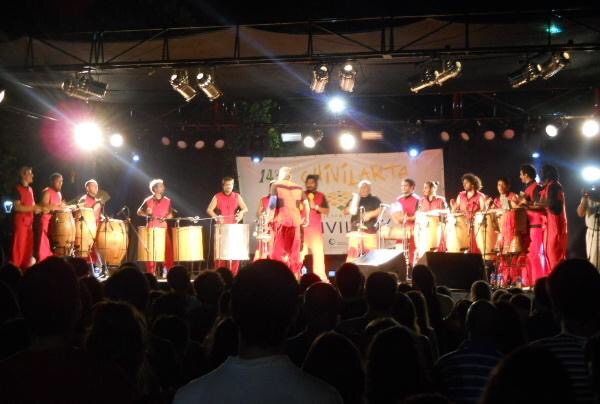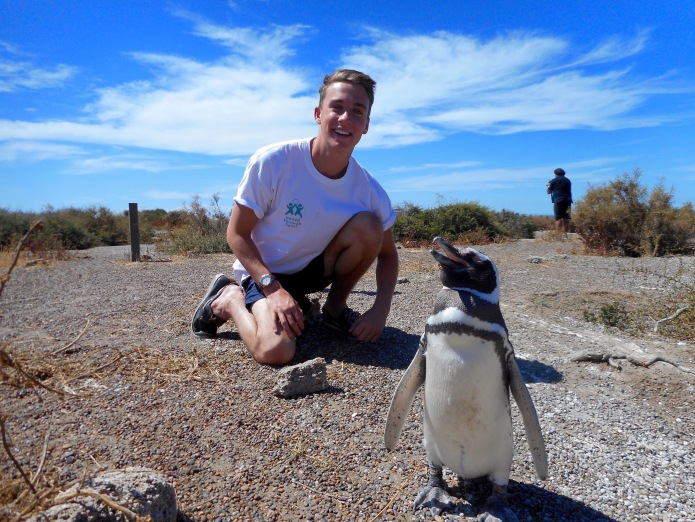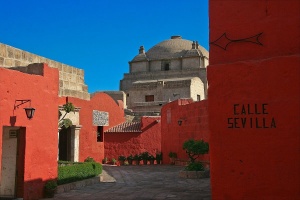With high expectations for Uruguays’ capital after a fantastic first two days, we were somewhat disappointed in arrival. Montevideo itself is a port town, and it serves as one of the biggest in South America, and with Uruguay being a relatively tiny country or 3 million of which the majority live in the capital, we expected a lively port town thriving from summer tourists.
It wasn’t.
The town centre was unimaginably empty for a capital city, and the best atmosphere we experienced through our whole time there was in the hostel bar. Thankfully, our hostel rented bikes out which gave us something to do, and as we moved further from the center it became gradually nicer. We ended up having a great afternoon in the sun cycling on the ‘Rambla’, a wide cycle track which follows all the coast of Montevideo. We followed it for beach after beach, and it became clear as to where all the people were. We stopped for beachside drinks before returning back to the hostel in the center of town, in the hope of finding an open restaurant. We finally found ‘The Manchester’ where we settled for pizza and coke. We were quite surprise of the ghost town feel of the city being mid summer in one of South America’s top summer holiday destinations. But nonetheless, we had salvaged a pretty fun day. We were excited to move on to Punta del Este, where we were promised a much better atmosphere and experience.
It was.
Arriving in Punta it looked like Uruguay’s own, smallscale version of Miami. Tall, posh apartment buildings stood over the golden beaches, glitzy bars, huge casinos and friendly streets of Punta. It felt immediately so much nicer, friendlier, and more of a destination than Montevideo. People headed out to little shacks for evening drinks by the beach, and a great vibe or ‘buena onda’ filled the town. We decided to take our time here and not rush on, and it was worth it. The first two days were spent on the beach, visiting the harbour, the famous ‘hand in the sand’ and just generally enjoying the relaxed atmosphere. The following day we headed to ‘La Barra’, a little town 10 minutes from Punta, a lot less busy and arguably even better. With hippies running the hostels and reggae music and handcraft stalls filling the beachside town, we spent the day taking the over-friendly hostel dog for a walk (and a swim) by the beach. We then headed out to one of the cool restaurants to try our first, and by no means last Churrasco, Uruguay’s main dish being mainly a steak sandwich with fried egg and other yummy things inside. But who can blame them with Argentina as their neighbour and so many fields of cows. With full bellies, we returned home to our hairy friends in the hostel before heading on to La Pedrera the next day.
As our 4 hour bus arrived into La Pedrera, it was all I had hoped for. Small shacks and cool hostels lined the palm tree covered streets with locals, tourists, and many more hippies walking round the streets half naked with beers, churrascos and surfboards in hand. We checked in at possibly the coolest hotel we’ve ever stayed at, with a nice pool, palm trees and compulsory reggae/chill music. The reason all these places are so laid back and hippy may be highly correlated with the fact that cannabis is legal in Uruguay, and it is truly in abundance. From weed flavoured products in the supermarket and shops to weed plant catalogues, it is truly everywhere and I must admit it seems to have had a good effect. For me, Uruguay was by far the most chilled out, safest place I have visited and I wouldn’t think twice about going back to work or for a longer period of time. After chilling out on probably the best beach in Uruguay and in fact one of the best beaches I’ve ever seen, it was all too soon to return back to Punta. If we had known how much we would have loved Uruguay, I’m sure we would have stayed for longer. But I guess when you have Rio de Janeiro and Brazil waiting for you, you can’t get that upset.
Goodbye Uruguay, see you soon.


















































